| Columns Retired Columns & Blogs |
Dunlavy Audio Laboratories SC-IV loudspeaker Measurements
Sidebar 3: Measurements
Footnote 1: To examine the effects of different MLSSA boards and microphones—DAL uses a very expensive B&K 4133, while I use an omnidirectional B&K 4006, to which I apply an on-axis correction curve—I measured my 1978 pair of Rogers LS3/5a loudspeakers in the DAL anechoic chamber, which I had previously measured in Santa Fe. There were no appreciable differences other than those due to the microphones.—John Atkinson
Fig.1 shows the SC-IV's impedance magnitude and phase, measured with the MLSSA system but plotted with the Audio Precision software for consistency with other reviews published in Stereophile. The former stays between 4 and 6 ohms from 37Hz to 2150Hz, with minimum values of 3.55 ohms at 9.5kHz and 3.15 ohms at 10Hz. Though the speaker will be quite demanding of current, with its benign electrical phase angle and high sensitivity—around 91dB/W/m—it will play loud with moderately powered amplifiers. In addition, because of the small variation of impedance with frequency, the SC-IV's tonal balance will not change much when driven by a tube amplifier with a relatively high source impedance.
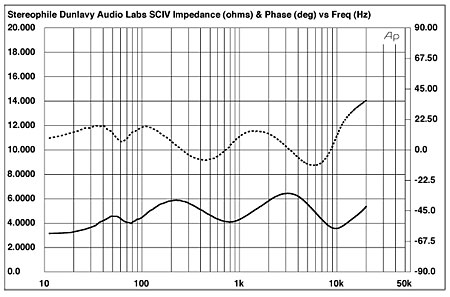
Fig.1 Dunlavy SC-IV, electrical impedance (solid) and phase (dashed) (2 ohms/vertical div.).
I have grown increasingly concerned lately that, with very large loudspeakers, my standard measuring distance in Stereophile loudspeaker reviews is too close—there might be some clockwise tilt to the measurement, due to proximity effect. (In the measurement of a loudspeaker's frequency response, it's assumed that the microphone is in the speaker's far field—ie, the distance from the mike to the speaker is much greater than the largest dimension of the speaker's baffle.) I've been regularly checking this in my reviews for some time, by taking two sets of measurements: one at 45" (which gives me relatively good midrange resolution with the DRA Labs MLSSA system), and another at 90" (the farthest I can practically get in the Stereophile listening room, but which doesn't give me much resolution below 1kHz). With the exception of large panel speakers, such as the Apogee Stage and Audiostatic ES-100, the 45" distance has proved acceptable. For this review, however, I decided to experiment by performing the measurements in Dunlavy Audio Labs' large anechoic chamber in their new Colorado Springs facility (footnote 1).
Though this enabled me to use a much larger microphone distance—3m, or 10'—a significant reflection of the speaker's direct output was still present from the loudspeaker stand. This limited the midrange resolution to 300Hz or so. I therefore performed nearfield measurements on the midrange and bass drivers, and integrated these with the far-field response to produce the composite plot shown in fig.2.
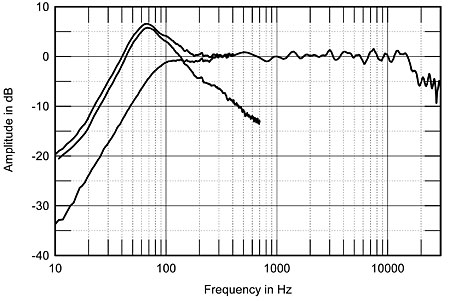
Fig.2 Dunlavy SC-IV, anechoic response on HF axis at 3m with grille on, with nearfield midrange response below 400Hz, nearfield woofer response below 700Hz, and complex sum of nearfield midrange and woofer outputs in the ratio of the drive-unit diameters.
From 200Hz to 12kHz, the SC-IV is astonishingly flat. There's a very slight downward tilt to the top octave, and a couple of minor ripples in the treble, the latter due to the grille, but it would be churlish to make much of these effects. As I don't have the speakers in Santa Fe and am unable to perform some confirming in-room measurements, I'm less sure about what's going on below 200Hz. The midrange units roll out neatly below 100Hz, with the classic 12dB/octave sealed-box slope. However, there is significant overlap with the woofers, which have a bandpass response centered on 68Hz. The midranges, in fact, add a small degree of reinforcement to the bass region (seen as the 1dB or so difference between the overall summed response and the woofer response alone).
Weighting the two nearfield responses in the ratio of the drive-units' diameters, as recommended by DR Labs' Doug Rife, appears to indicate that the woofers are a little too sensitive in absolute terms. As a result, the overall response peaks by just under 6dB in the midbass before rolling out to reach a –6dB point at 30Hz. RD did mention some occasional midbass thickness, however, and in my own listening to the SC-IV I did note that the bass was "generous," which indicates that this graph is probably in the ballpark. Perhaps John Dunlavy would like to comment on the SC-IV's bass tuning in his "Manufacturer's Comment."
It wasn't possible to do a family of off-axis plots, the DAL anechoic chamber not having a suitable loudspeaker turntable. However, listening to noise and music revealed that the speaker's balance doesn't change significantly over a 30° or so horizontal window. Vertically, as long as you sit on or near the tweeter axis, everything should be hunky-dory.
Turning to the time domain, fig.3 shows the SC-IV's impulse response on the tweeter axis. (The speaker-stand reflection reveals itself as the small dimple in the plot just before the 12ms mark.) Though it's hard to tell anything from a raw impulse response, the simple up/down shape with minimal overshoot implies excellent time coherence. (The only speaker on which I've measured a similar impulse response is the Quad ESL-63.)
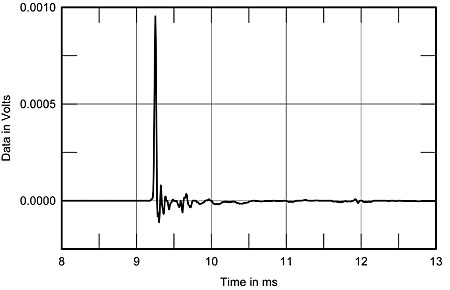
Fig.3 Dunlavy SC-IV, impulse response on HF axis at 3m (5ms time window, 35kHz bandwidth).
Integrating the impulse response gives the speaker's step response: the output it would have if presented with a voltage step from zero to some arbitrary DC value. The ideal shape resembles a right triangle—ie, the trace moves vertically away from the graph's time axis, then moves back to it at a shallow angle. (Actually, the ideal decay-back-to-zero amplitude is exponential, meaning that it will have a slight concave curve, but this difference is inconsequential.) Look at the SC-IV's step response in fig.4. Pretty ideal—the outputs of all the drive-units arrive at the microphone at pretty much the same time. This, by definition, is time coherence. As a result, the SC-IV is one of the only two loudspeakers I've encountered that can produce a good squarewave shape. (The other was, again, the Quad ESL-63.) And this was over a wide bandwidth, from 200Hz to 5kHz. Although the subjective effects of a loudspeaker featuring time-coherent behavior are not fully understood, my subjective impressions have been that such designs always feature superb imaging and soundstaging. The SC-IV is no exception.
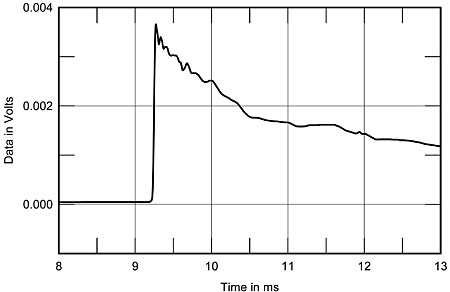
Fig.4 Dunlavy SC-IV, step response on HF axis at 3m (5ms time window, 35kHz bandwidth).
Another way of looking at a speaker's time coherence is to examine the deviation left over from the phase response when that due to the speaker's departure from a flat amplitude response is removed. In a minimum-phase system—one that has just the right amount of phase deviation for its frequency response—the phase and amplitude responses are related mathematically by the Hilbert Transform. Subtracting the Hilbert-Transformed amplitude response from the measured phase response will leave what is called the "excess phase"; ie, the speaker's departure from a true minimum-phase system. Such departures are generally due to system time delays, as when the output of one drive-unit leads another in time due to physical displacement or the use of a high-order crossover. The Dunlavy's excess phase on the HF axis at 3m can be seen in fig.5, adjusted arbitrarily to give 0° excess at 10kHz, which moves the trace away slightly from the 0° line for visual clarity. The ripples are probably due to residual reflections in the windowed impulse. This excess phase trace is the best I've measured, meeting an astonishing ±0.7° tolerance from 300Hz to 10kHz. This speaker is more like an electrical component in its phase performance.

Fig.5 Dunlavy SC-IV, excess phase on HF axis at 3m (delay = 41µs).
The MLSSA system software can calculate a speaker's cumulative spectral-decay, or waterfall, plot from its impulse response. This shows how its frequency response changes as the exciting impulse dies away. A perfect speaker would show a straight line (representing its frequency response) that immediately dropped into the floor of the measurement. Fig.6 shows the SC-IV's behavior. (I used a 0.15ms window risetime to calculate this plot, which visually emphasizes the behavior of delayed resonances, making them easier to perceive. John Dunlavy examines the implications of this in his "Manufacturer's Comment" letter.) One such mode can be seen at the cursor position, at just under 3kHz. But even with this exaggeration, note how clean the SC-IV's overall die-away is: There's a good 18dB drop in output level, evenly balanced across the upper midrange and treble, before a slight amount of treble hash and the aforementioned mode at 3kHz make their presences known.
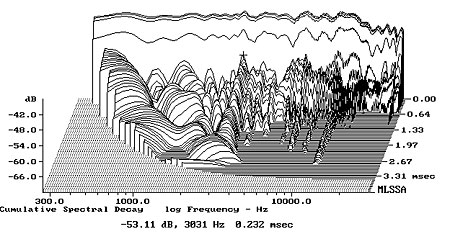
Fig.6 Dunlavy SC-IV, cumulative spectral-decay plot (risetime = 0.15ms).
This is one heck of a loudspeaker!—John Atkinson
Footnote 1: To examine the effects of different MLSSA boards and microphones—DAL uses a very expensive B&K 4133, while I use an omnidirectional B&K 4006, to which I apply an on-axis correction curve—I measured my 1978 pair of Rogers LS3/5a loudspeakers in the DAL anechoic chamber, which I had previously measured in Santa Fe. There were no appreciable differences other than those due to the microphones.—John Atkinson
- Log in or register to post comments




































